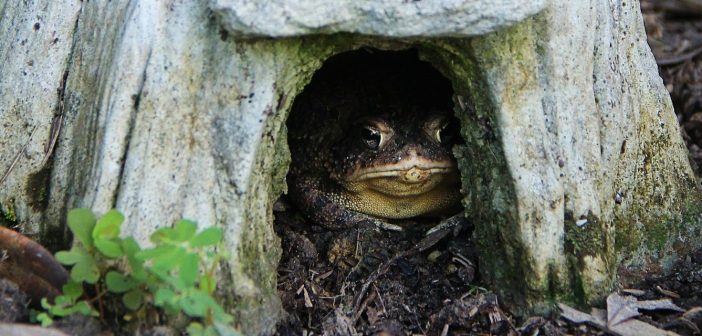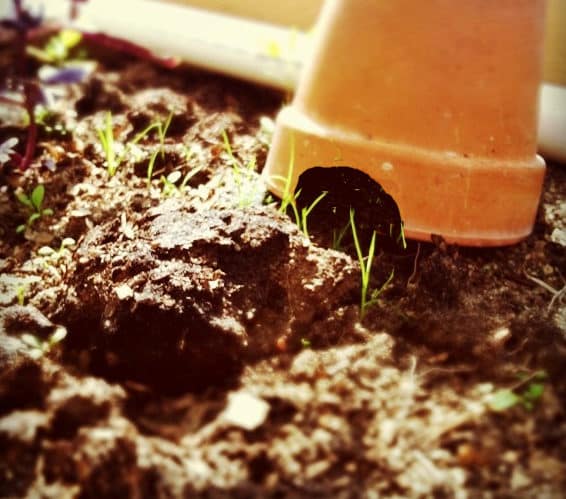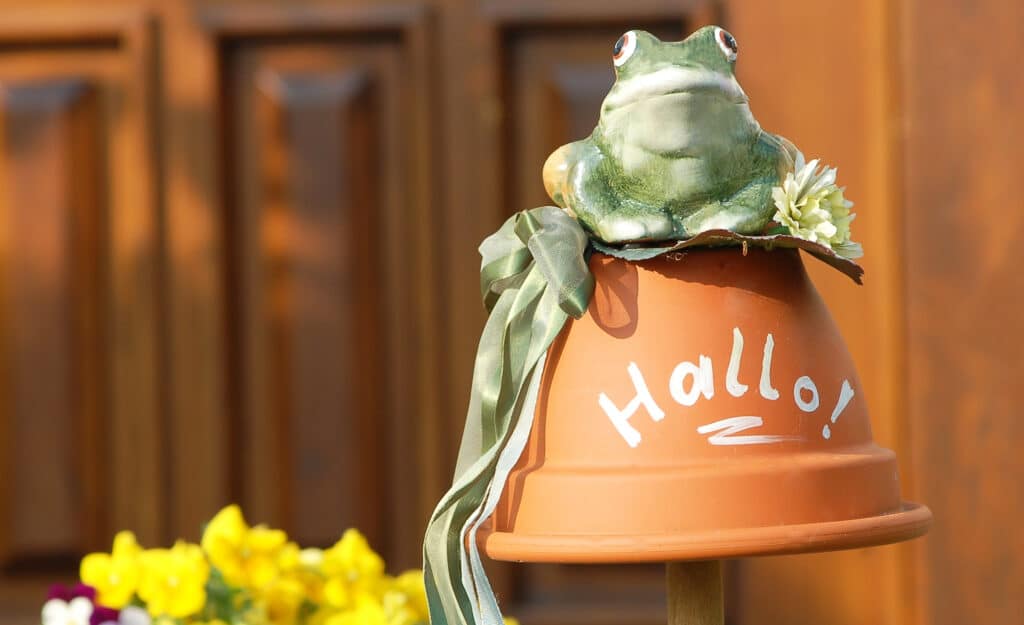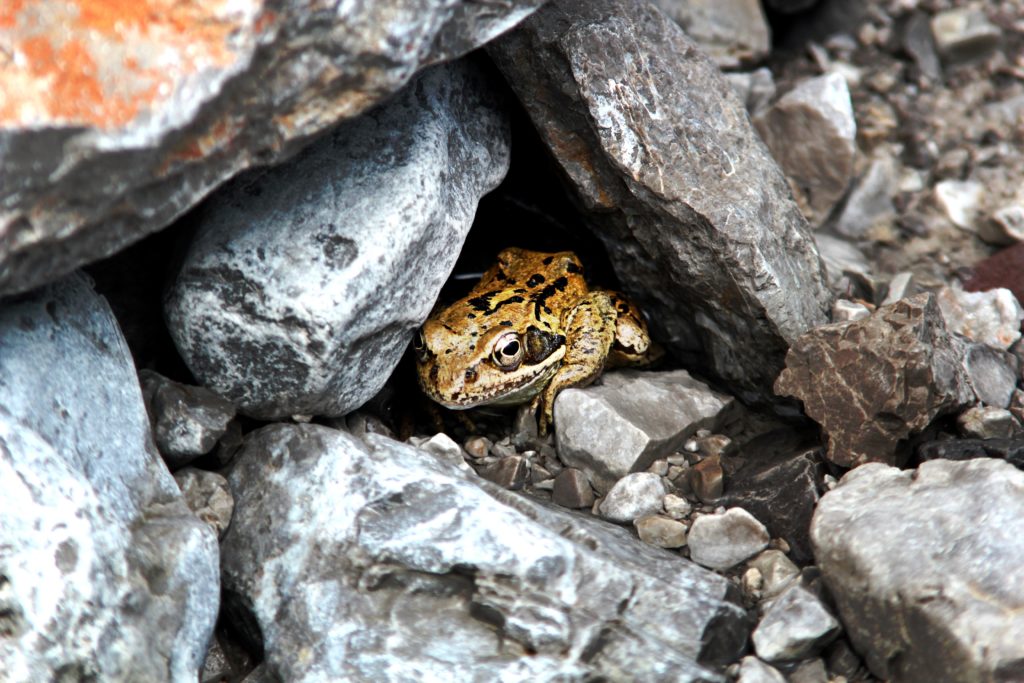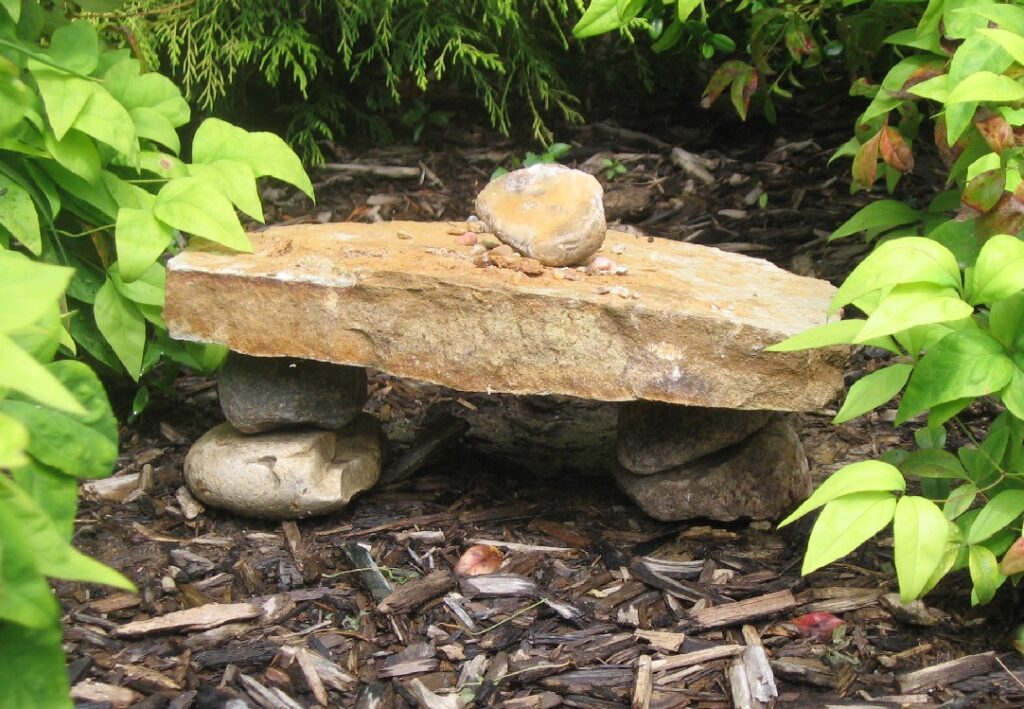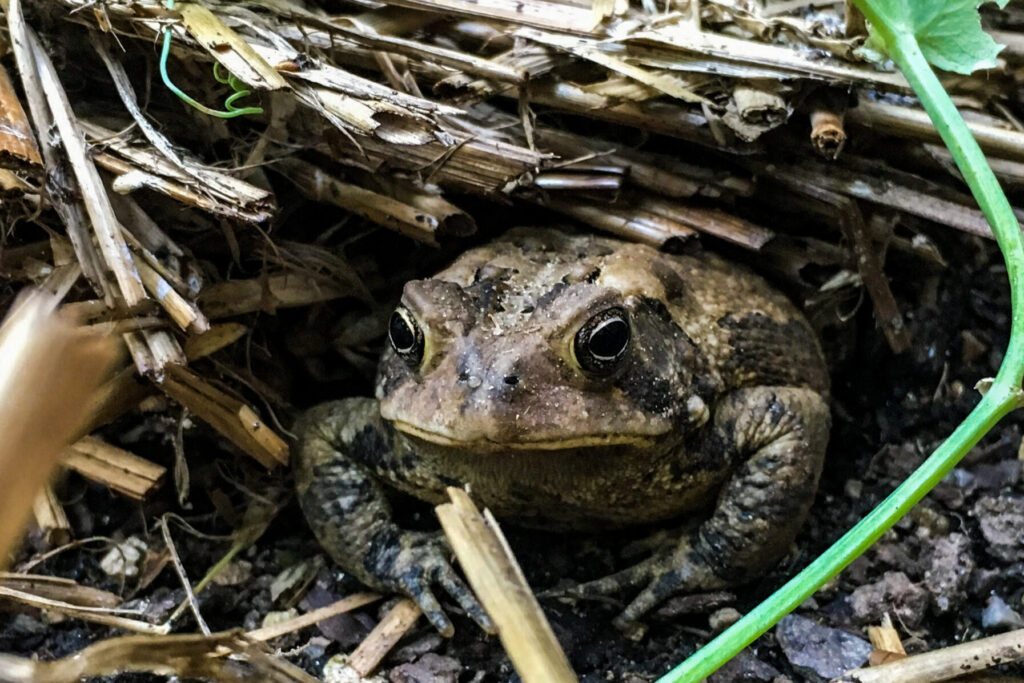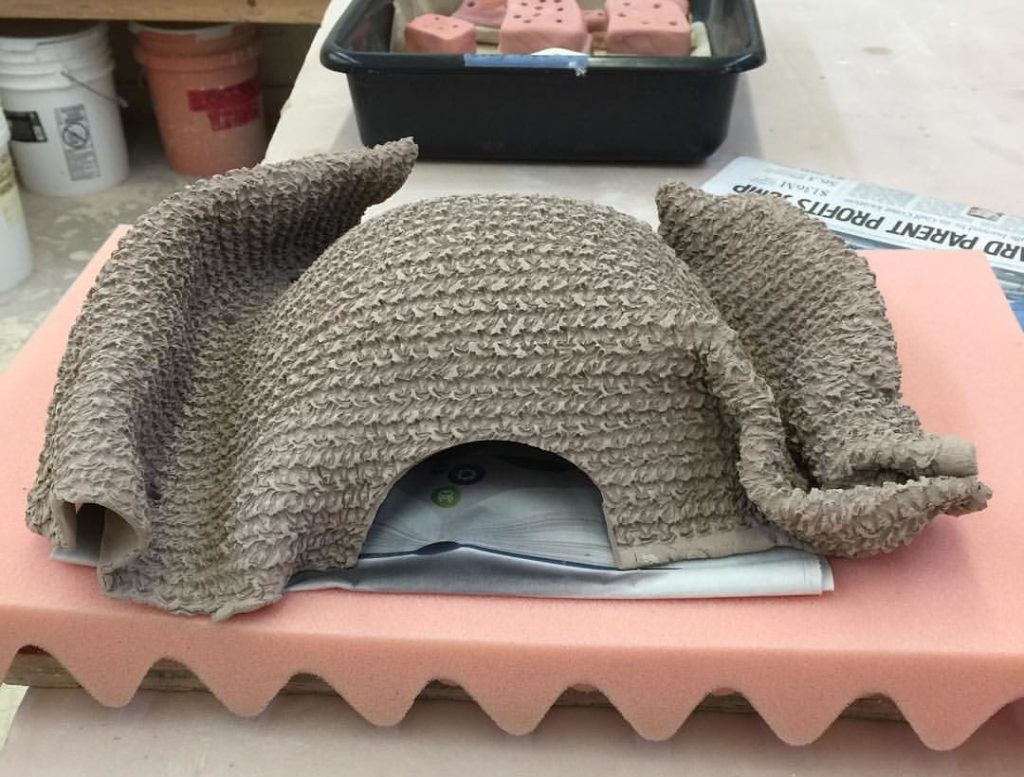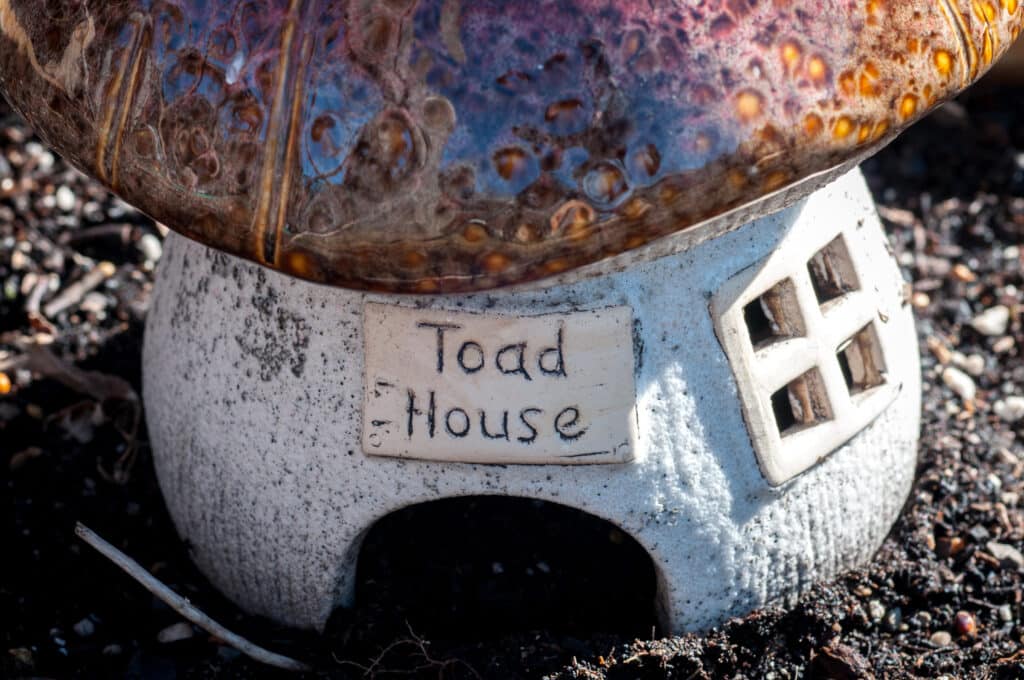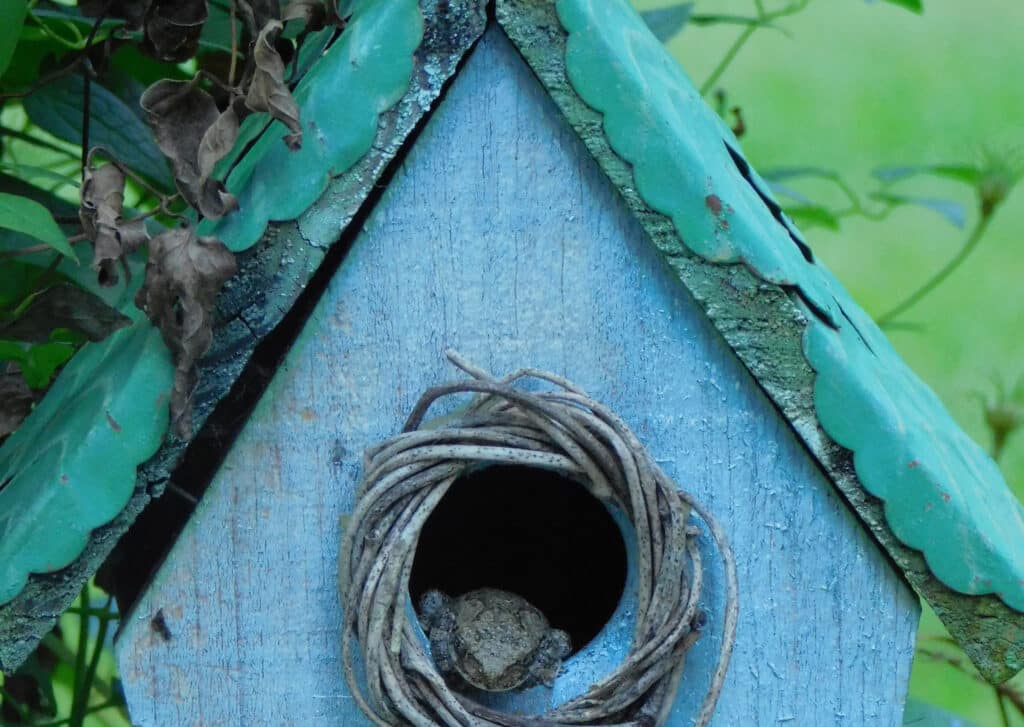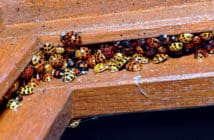When night comes, toads (and frogs) set out from their daytime hiding spots to go on the hunt. Small prey is the game they seek out, and a single toad can eat up to a thousand insects, slugs, spiders, and other pests per night! If you want to spoil them a bit in return for their excellent work, make a house for them. In the daytime, toads seek sheltered places to stay cool. If water isn’t close by, place a shallow dish or flowerpot saucer holding water on the ground near the toad house. This will help to let them know you’re offering comfortable digs. It’s an easy and fun project for parents and children or just you alone. Put on your DIY apron and get creative!
Make a flowerpot toad house
There are several ways to use a flowerpot as a toad house, and it’s simple. First, though, make entrance and exit holes. Do this by drilling a series of holes in a semicircular pattern above the lip of a flowerpot pot. Then, tap out the piece with a hammer. That forms the entrance, which should be at least 4 or 5 inches wide (10–13 cm) and 3 inches high (7 cm) because toads get pretty large. Make sure the cut edges are smooth (a metal file will work for that). Make an identical hole on the opposite side as an emergency escape exit.
Invert the pot and set it on the ground in a shady spot. That’s it! Or, make a toad cave: Lay the pot on its side and partially bury it so the toad will rest on the soil within. Enlarge the drainage hole on the bottom as an exit.
Or, dig a well in the soil 4 to 5 inches deep (10–13 cm) and slightly smaller than the circumference of the flowerpot’s rim. Fill the hole with soft soil topped with a layer of moist, rotting leaves and set the inverted pot over it (with entrance and exit holes carved in the rim). It should surround the well, not sit in it. In dry weather, sprinkle some water through the hole in the top to moisten the bedding, and change it occasionally to keep it fresh (when the toad isn’t home).
Coffee cans or other metal containers can be used for toad houses, but file off sharp edges and place them in dense shade, or they’ll get too hot.
Glamorize! Glue on decorative tiles, little ceramic toads, attractive rocks, or anything else that pleases you. Painting it is another alternative. Cover painted pieces with two layers of acrylic sealer (don’t spray the interior).
Mount a flowerpot toad house
Decorate a small flowerpot (or not) and hang it over a substantial pole hammered into the ground. The rim of the flowerpot should only be a couple of inches above the soil so a toad can get under it. Ensure that the pole and pot are stable so a toad won’t somehow trap a toad inside. Place it in a shady spot.
Make a stone toad hole
In a shady spot near water, excavate a hole 10 inches square by 10 inches deep (25 cm). Fill it with soft soil topped with a layer of moist, rotting leaves for summer bedding and winter hibernation.
Build walls and a roof over it using several large, flat stones. Leave an opening in the front and back for entry and exit. You can use decorative stones or jazz up rocks by painting them.
Carve out a tidy hole in a brush pile
Mold a toad house
If you’re into ceramics, create a novel design for a nontraditional hidey-hole.
Sculpt a toad house
Bury a birdhouse toad house
Partially bury an old birdhouse and fill it with soft soil to ground level. Leave the entrance hole just barely above the ground so a toad will have easy access.
How to attract toad residents
Temporarily hang a soft light a couple of feet (0.6 m) above the ground and near the entrance to the toad house to attract insects. The insects will draw toads if there are any living in your yard.
Look, but don’t touch!
Too much handling will drive a toad away. Also, a toad handled roughly will produce a toxic secretion through its skin that’s an irritant, especially if it gets into a person’s eyes or mouth. It’s a toad’s only way of protecting itself. Take care to place toad houses where family pets won’t get to them, either—this isn’t so much for protecting the toads, but for your pets—to spare them the extremely unpleasant result of tasting a toad! What to do if your pet bites a toad
More reading:
Explore an insect-friendly yard
Build a simple birdhouse
Say no to pesticides


